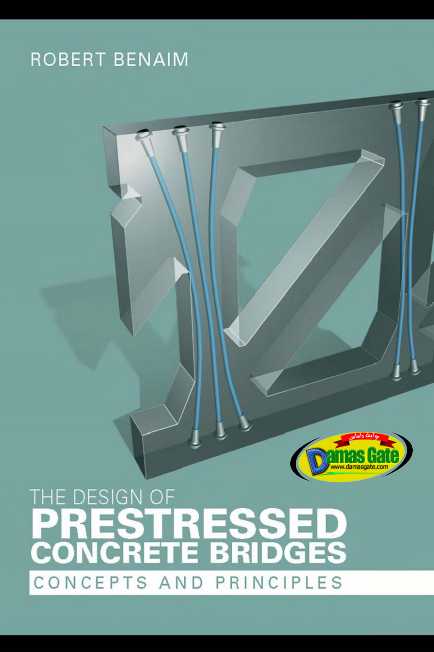Prestressed Concrete Bridges
Concrete has been in use as a primary building material since Roman times. As it is strong in compression but weak in tension, it was used in arches, vaults and walls where it is stressed principally in compression.
In the mid-nineteenth century, it was discovered that iron and later steel bars could be embedded in the concrete, effectively giving it tensile strength. This allowed it to be used in beams and slabs, where it worked in bending. Buildings, bridges, retaining walls and many other structures were made in this reinforced concrete. However, although it is one of the principal building materials in the world, it has shortcomings. Reinforced concrete beams and slabs defl ect signiï¬پ cantly under load, requiring stocky sections to provide adequate stiffness; as it defl ects it cracks which spoils its appearance and leaves the reinforcing bars vulnerable to corrosion; the large number of bars required to give the necessary strength to long span beams in bridges and buildings make it difï¬پ cult to cast the concrete; it is labour intensive and slow to build.

Introduction
In the 1930s, Eugène Freyssinet invented prestressed concrete. High tensile steel cables were substituted for the bars. These cables were tensioned by jacks and were then locked to the concrete. Thus they compressed the concrete, ridding it of its cracks, improving both its appearance and its resistance to deterioration. The cables could be designed to counter the defl ections of beams and slabs, allowing much more slender structures to be built. As the cables were some four times stronger than the bars, many fewer were necessary, reducing the congestion within the beams, making them quicker to build and less labour intensive.
Most concrete bridges, except for small or isolated structures, now use prestressing. It is also being used ever more widely in buildings where the very thin fl at slabs it allows afford minimum interference to services and in some circumstances make it possible to increase the number of fl oors within a deï¬پ ned envelope.
Despite its manifest advantages and widespread use in bridges, outside a minority of expert engineers, prestressing is not well understood by the profession, and is not well taught in most universities. Engineers have to learn as best they can as they practice.
Download
*
